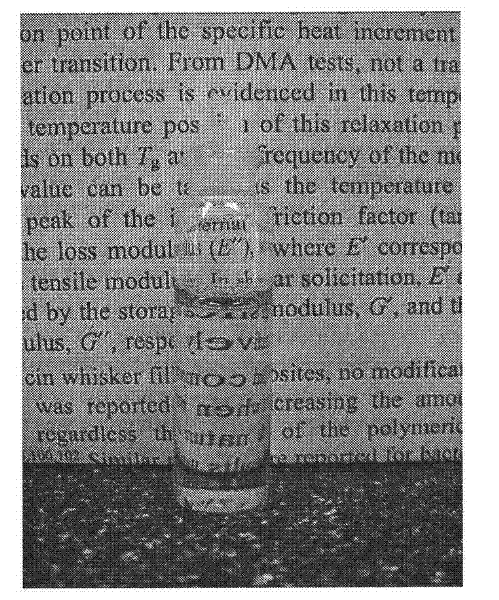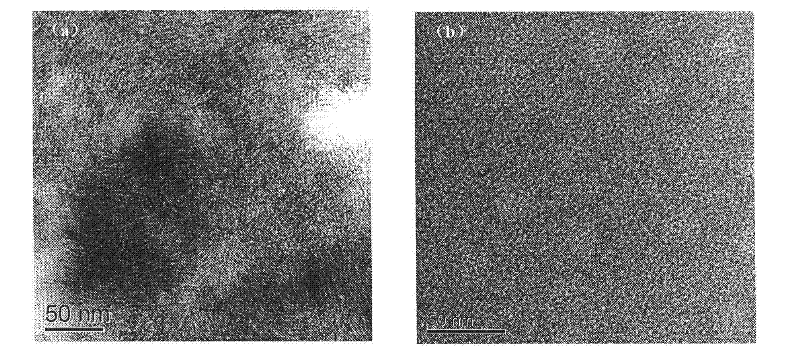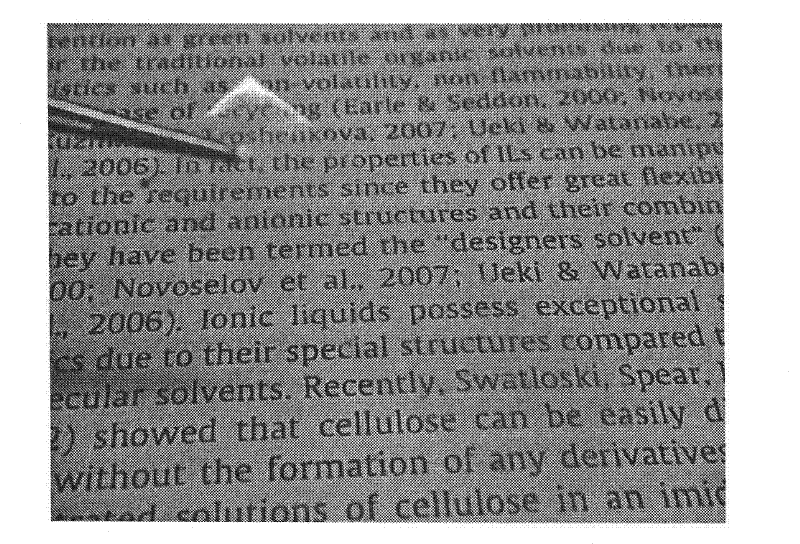Method for preparing nano cellulose microfibril reinforced polymer composite material
A technology for nanocellulose and composite materials, which is applied in the field of preparing nanocellulose microfiber reinforced polymer composite materials, can solve the problems of complicated preparation methods, limited application scope, and difficulty in achieving uniform dispersion of water-insoluble polymers, and achieves the preparation of Simple process and uniform structure
- Summary
- Abstract
- Description
- Claims
- Application Information
AI Technical Summary
Problems solved by technology
Method used
Image
Examples
Embodiment 1
[0031] Embodiment 1, prepare the composite film of nanocellulose microfiber reinforced keratin
[0032] Weigh dry microcrystalline cellulose (polymerization degree 220) and keratin (mass ratio of dry microcrystalline cellulose to keratin is 1:3) dried under vacuum at 80°C for 12 hours, and add them into [HPy]PF6, The mass concentration of the prepared total solution is 20%. After stirring and dispersing evenly, put it into an oil bath, control the dissolution temperature at 60°C, and carry out mechanical stirring. The dissolution time was controlled at 4 hours, and a transparent and clear solution was obtained after vacuum defoaming. An ionic liquid solution of cellulose / keratin was thus prepared. Lay the film on a 40-60°C heating plate, put it into a water coagulation bath to cool and shape. The ionic liquid is washed away with distilled water, and dried in a vacuum oven to obtain a transparent nanocellulose microfiber-reinforced keratin composite material film. The tensi...
Embodiment 2
[0033] Embodiment 2, prepare the composite fiber of nanocellulose microfiber reinforced polystyrene sulfonic acid
[0034] Weigh the absorbent cotton (polymerization degree 1600) and polystyrene sulfonic acid (the mass ratio of absorbent cotton to polystyrenesulfonic acid is 1:1) that has been vacuum-dried at 80°C for 12 hours, and add them to BMIMCl to prepare the total solution The concentration is 40%. After stirring and dispersing evenly, put it into an oil bath, and control the dissolution temperature at 90°C. And carry out mechanical stirring. The dissolution time was controlled at 1 h, and a transparent and clear solution was obtained after vacuum defoaming. A cellulose / polystyrene sulfonic acid ionic liquid solution was thus prepared. Spinning by wet spinning on small spinning equipment. The spinneret hole diameter is 80-100 μm, the coagulation bath is a mixed solution of BMIMCl and water, and the temperature is 20-40°C. After stretching, water washing, stretching...
Embodiment 3
[0035] Embodiment 3, the composite material fiber of nanofiber microfiber reinforced cellulose acetate
[0036] Weigh bamboo pulp (polymerization degree 800) and cellulose acetate (mass ratio of bamboo pulp to cellulose acetate is 2:3) that have been vacuum-dried at 80°C for 12 hours, and add them to [MPy]MA to prepare the total The solution concentration is 25%. After stirring and dispersing evenly, put it into an oil bath, control the temperature of the solution at 100°C, and carry out mechanical stirring. Control the dissolution time at 0.5h, and obtain a transparent and clear solution after vacuum defoaming. Thus a bamboo pulp / cellulose acetate / ionic liquid solution was prepared. Spinning by wet spinning on small spinning equipment. The diameter of the spinneret hole is 80-100 μm, the coagulation bath is water, and the temperature is 20-40°C. After drawing, washing, drawing and drying, the composite material fiber of nanofiber and microfiber reinforced cellulose acetat...
PUM
| Property | Measurement | Unit |
|---|---|---|
| Tensile strength | aaaaa | aaaaa |
| Tensile modulus | aaaaa | aaaaa |
| Strength | aaaaa | aaaaa |
Abstract
Description
Claims
Application Information
 Login to View More
Login to View More - R&D
- Intellectual Property
- Life Sciences
- Materials
- Tech Scout
- Unparalleled Data Quality
- Higher Quality Content
- 60% Fewer Hallucinations
Browse by: Latest US Patents, China's latest patents, Technical Efficacy Thesaurus, Application Domain, Technology Topic, Popular Technical Reports.
© 2025 PatSnap. All rights reserved.Legal|Privacy policy|Modern Slavery Act Transparency Statement|Sitemap|About US| Contact US: help@patsnap.com



